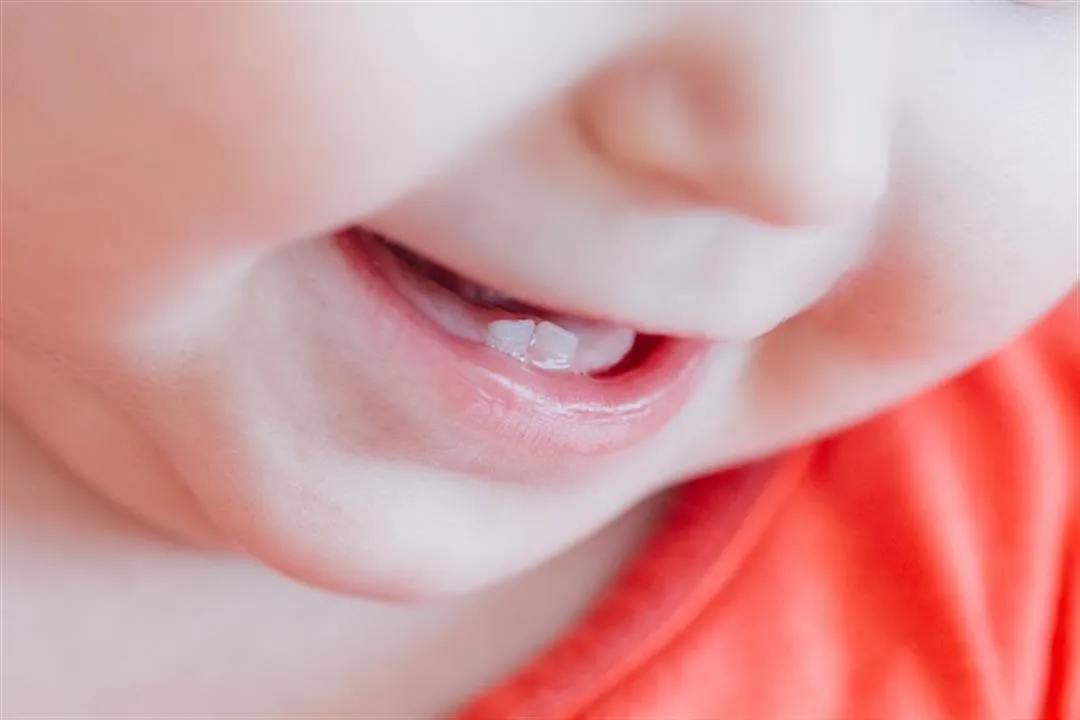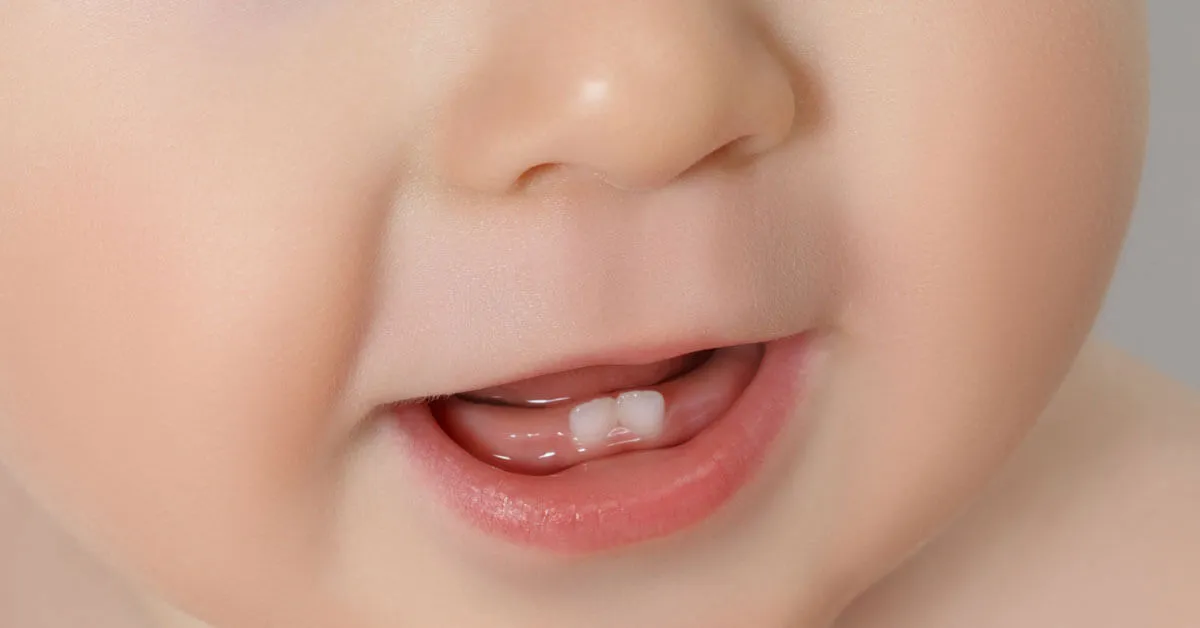The process of the appearance of baby teeth is one of the important stages in the child’s growth and development, which may cause particular concern to parents,so did you know that baby teeth begin to appear in the early stages of a child’s life? Following this process and understanding the symptoms that may accompany it contributes to providing appropriate health care for the child and in this article, we will discuss in detail the process of baby teeth appearing, and highlight the symptoms that may appear during this vital period in a child’s life.
Read also: How to get a Hollywood smile
What is the stage of teething in children?
Baby teething, also known as the eruption of baby teeth, is a natural process that a baby goes through during his or her growth and development, which usually begins between 3 and 12 months of life, as it is characterized by the appearance of the first teeth, usually in a period ranging between 6 and 9 months and these first teeth consist of two pairs, and the child’s complete teeth, which are 20 teeth, may take several years to all appear.
Teething pain is characterized by a headache-like feeling, accompanied by a constant feeling of discomfort, often, the child needs to calm down and relieve this feeling, and this can be achieved by spending additional time with him or offering him a new toy to entertain him, as teething gel can also be used to relieve itching and pain.
Stages of tooth appearance in children
Babies’ teeth appear according to the usual teething schedule, where this work is divided into specific time stages as follows:
From 6 to 12 months: The central incisors appear, which are the teeth in the middle part of the upper and lower jaw.
From 9 to 12 months: The lateral incisors appear, which are the teeth next to the central incisors.
From 13 to 19 months: The first molar appears.
Ages 16 to 22 months: Canines appear.
From 25 to 33 months: The second molar appears.
This table helps parents understand their child’s teething progress and determine when they might expect each tooth to appear, making it easier for them to better monitor the health and development of their child’s teeth.

Symptoms of teething in children
The need for children to bite or apply pressure on where new teeth emerge is normal during the teething period, as children usually express their desire to relieve pain caused by a tooth emerging under the gum by biting on hard objects such as a teether and babies also develop the instinct to bite in response to the feeling of comfort when doing so, and it is one of the symptoms of teething infants.
One common symptom of teething is swollen gums and the gums can become red, swollen and bruised before new teeth emerge and this swelling can be noticed when the baby opens his mouth, and is a common symptom of teething.
Excessive drooling is one of the signs that may indicate the appearance of a new tooth and although increased drooling may be a symptom of teething, it is considered normal as a child grows.
Babies can have difficulty sleeping at night during the teething period, as the pain caused by the growing teeth in the gums continues, leading to increased discomfort, especially during the night.
Some children may suffer from ear pain during the teething period, and this pain can be the result of inflammation or infection, but it may also be a symptom of the child entering the teething stage.
Changes in eating habits may be noticeable in children during the teething period and the desire to eat solid foods may increase, or children who are accustomed to eating solid foods may prefer solid foods instead of milk, due to the effect that the spoon of food has on the gums that are inflamed due to teething.
The possibility of a child developing a fever during the teething period is not common, as a high temperature in the child can indicate an infection or inflammation, but it may also be a result of pain resulting from teething.
Diarrhea may sometimes occur with a baby’s teething, but it is usually not common. If diarrhea is severe and persistent, you should consult a doctor.
How to reduce the symptoms of teething in children
A cold, wet cloth can be used to relieve teething pain and pressing the baby’s gums with the cloth helps numb the area and soothe the pain, as it is also recommended to cool the teething toy or teether slightly in the refrigerator before giving it to the child, taking care not to freeze it so that it does not become hard and cause injury to the child’s sensitive gums.
A solid material that is safe for babies to chew, such as teething rings, can be offered to relieve the stress of teething and in addition, the child’s gums can be gently massaged using a wet finger after washing them well, in order to relieve pain and calm the child.
If the child is in severe pain, pain relievers and anti-inflammatories, such as acetaminophen or ibuprofen, are good options for temporary pain relief, as teething gel, which usually contains a local anesthetic, can also be used to relieve pain in the gums.
In addition, if the infant’s desire to breastfeed increases during the teething period, the nipple of the feeding bottle can be changed, or a cup can be used instead, as it is also possible to use herbs that are considered safe to relieve pain, and which have been used by parents since ancient times for this purpose.
In conclusion, the appearance of children’s teeth is a natural stage in their development, and with it comes a group of disturbing symptoms that can be dealt with effectively, as by following the tips and tricks mentioned in this article, you can reduce the pain and irritation caused by the appearance of their teeth and make this stage easier for children and less stressful for parents and we can only encourage listening to the child’s needs and providing the necessary care and comfort during this sensitive period of their lives and if symptoms persist or develop into something of concern, it is best to consult a doctor for advice and appropriate treatment.
Related articles :
Hollywood smile in Istanbul
advantages of cosmetic dentistry in Turkey
Plastic surgery in Istanbul
Dental treatment cost in Turkey
advantages of laser teeth whitening in Istanbul
Types and risks of dental implants in Turkey
hair transplant techniques in Istanbul
Dental veneers in Turkey
Hair transplantation in Turkey
Types of orthodontics in Istanbul and their features
